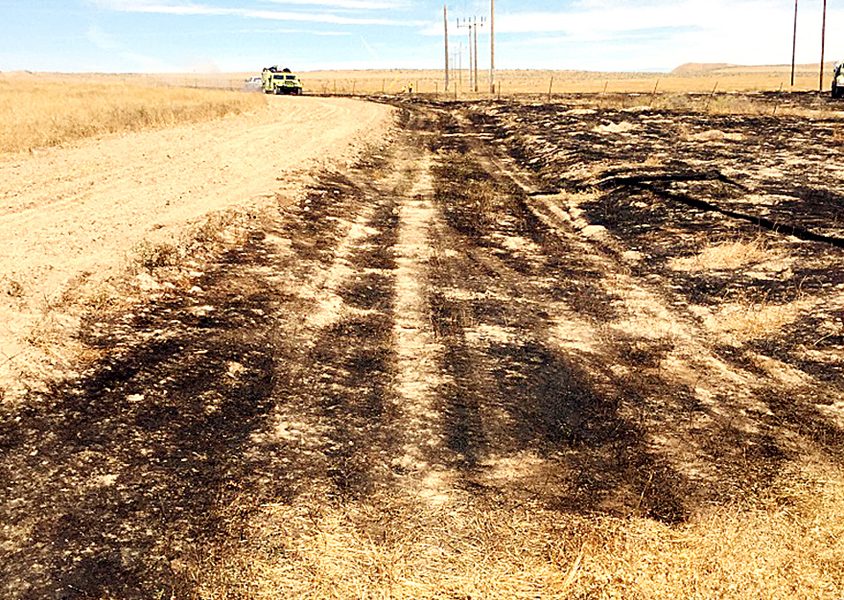
 Charred ground stops at a maintained break, showing the benefit in wildfire situations. (Submitted photo/BLM)
Charred ground stops at a maintained break, showing the benefit in wildfire situations. (Submitted photo/BLM)The Enterprise
VALE – Bureau of Land Management officials say a fuel break established 12 years ago helped protect private lands when wildfire broke out last month south of Vale.
The Lincoln Bench Fire started in early July and was pushed by light winds from private land onto BLM land.
As the fire crossed the boundary, it ran into a fuel break created in 2004 and maintained since then to protect private structures and property around Willow Creek.
The break halted the spread to the south; the fire was able to slowly flank it on the east and west edges. However, a single BLM heavy engine assisted by water tenders and structure protection engines from the Nyssa Rural Fire Department contained the fire that night and keep it to just under 4 acres in size.
Don Rotell, the Vale BLM’s supervisory natural resource specialist, said the fire could have been much worse.
“This fire definitely had potential to cause much more damage than it did,” Rotell said. “This is an excellent example of how a well-maintained network of fuel breaks can minimize burned areas and protect property and natural resources.”
Fuel breaks can be created by several means: herbicides, mechanical treatments like mowing, and strategic livestock grazing of targeted areas.
Generally, they are created by thinning vegetation on the sides of existing roads.
This creates a barrier to slow or stop fire spread, and also can provide an “anchor point” from which fire suppression personnel can safely fight fire.
The BLM has proposed several fuel break projects, including the Tri-State Fuel Break Project.
For more information, visit http://1.usa.gov/ 1Wr8EGD.




